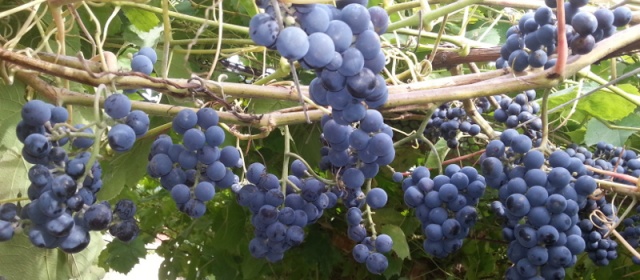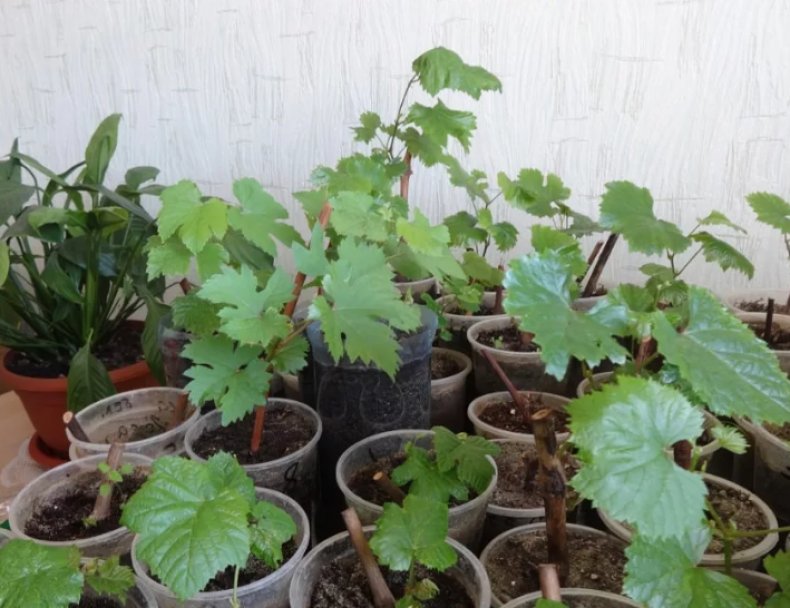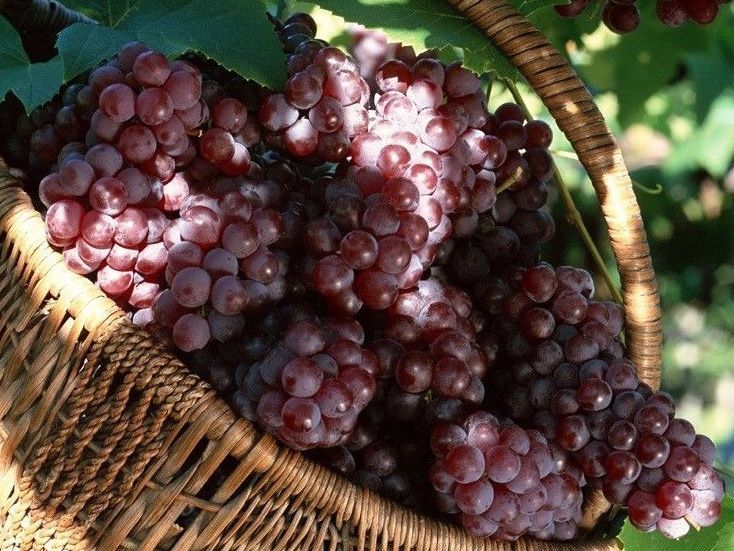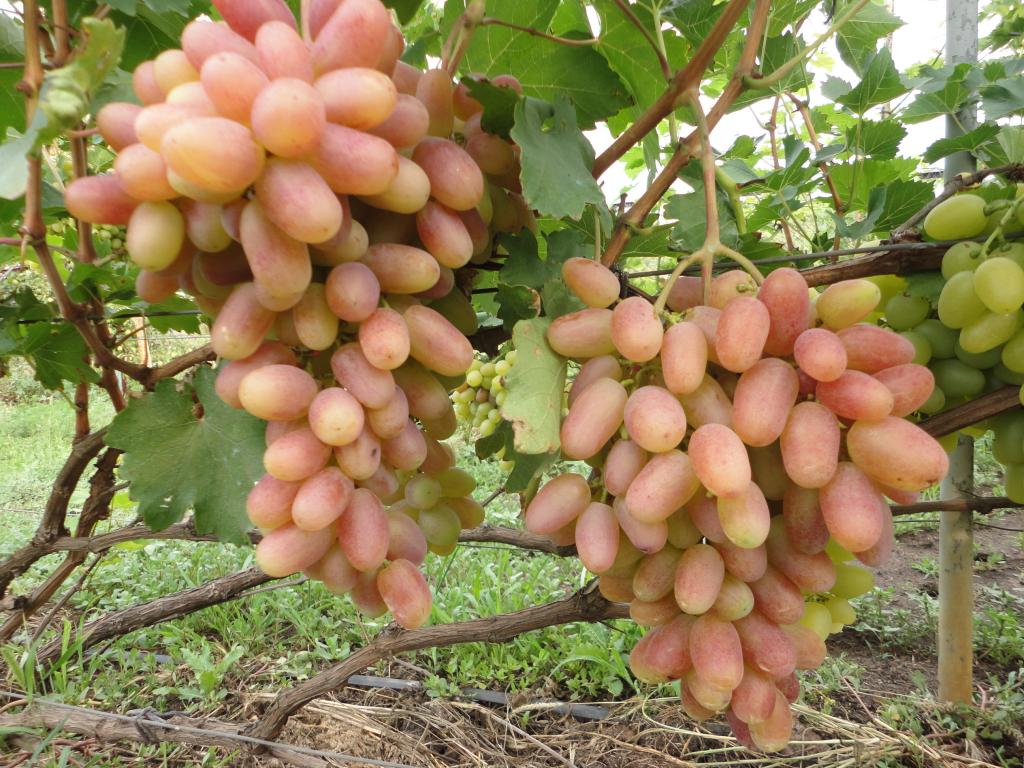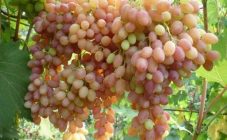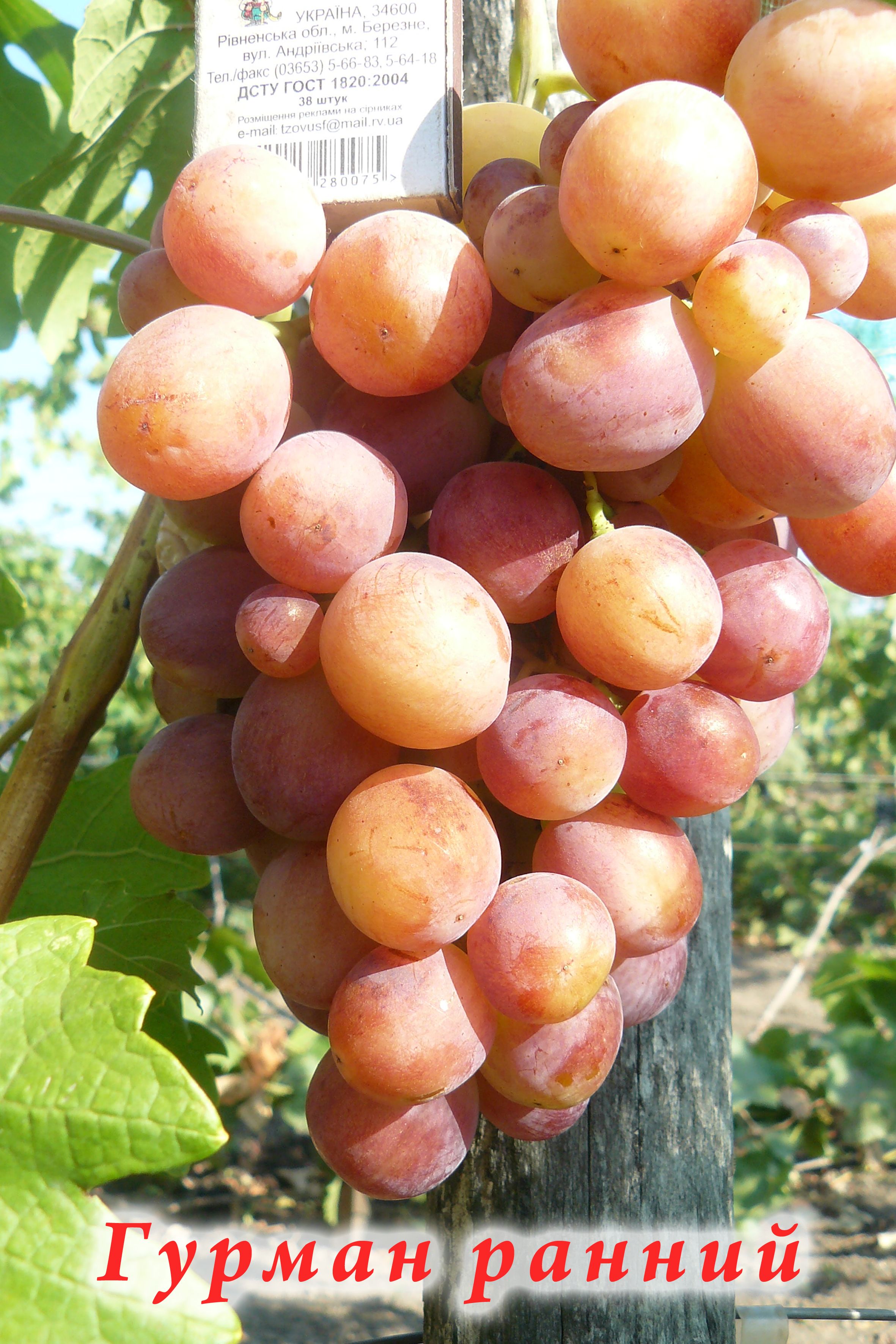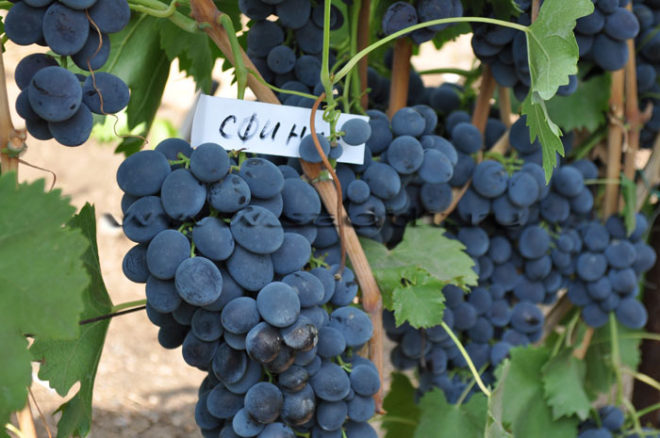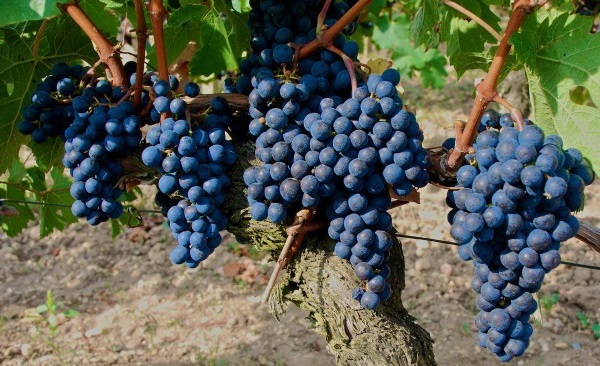The author of the Zilga hybrid is the Latvian P. Sukatniek. The breeder mixed the pollen of the varieties Dvietes Zila and Novgorod Yubileiny and pollinated the Smuglyanka grapes with the mixture. A feature of the resulting hybrid is frost resistance, versatility and unpretentiousness. The grapes received the greatest recognition in the Baltic countries, where, due to severe weather conditions, there are difficulties in growing crops even in greenhouses. The grower will appreciate the early maturation of the plant and its use for decorative purposes.
Description of the Zilga grape variety
Ripening period - early, 102 days. At the end of July it is already possible to harvest.
Growth strength: grapes can grow up to 2 m during the season.
The berries are blue, weighing about 4 g, oval in shape.
The pulp and juice are lightly colored.
The inside of the berries are slimy.
The bunches are dense, large - weighing up to 400 g.
Features of the variety
- Unpretentious: Zilga grapes will feel comfortable regardless of soil type.
- The flowers are bisexual and do not need to be pollinated.
- A distinctive characteristic is frost resistance - grapes will withstand up to 30 degrees of frost.
- The cool summer does not affect the quality and taste of the berries.
- There are no difficulties in the maintenance and formation of the vineyard.
- Wasps have no love for this grape variety. Therefore, the crop can hang on the bushes for a long time, continuing to accumulate sugar.
- Great for making grape juice, raisins and dessert wines.
- The varietal difference is immunity to diseases - oidium and mildew.
Growing technology
Soil selection
It is important that the soil is loose, warm, light and has neutral acidity. In a neutral environment, the plant consumes more macronutrients. Thanks to crushed stone and sand in the composition, the soil has such a property as air permeability.
Grapes are a drought-resistant culture. Therefore, you should not plant plants in areas where groundwater is closer than 1.5 m.
The place chosen for viticulture should be open to sunlight, even and with a slight slope. In this case, it is important to shelter the grapes from wind and drafts. For example, you can plant plants along the wall of a building or next to other trees.
Preparation of seedlings
Annual shoots up to 50 cm high are preferred. It is important that the roots are not damaged or affected by mold. A healthy plant has at least 3 developed roots. Until the time of planting comes, the grapes are placed in a separate container with earth at a temperature of at least 25 degrees. Immediately before the procedure, cut off the shoots and coat with molten paraffin.
Landing in open ground
For the southern regions, the best time for planting grapes is April. For the Moscow region - May. The main condition is the earth warmed up to 15 degrees.
It is better to harvest the grape hole in the fall. The depth varies from 20 to 80 cm. After filling it with compost and humus, leave it until the summer season. As a last resort, dig a hole in March, add fertilizer and leave for 1 month to allow the soil to settle. You can use complex mineral fertilizers and ammonium nitrate. If only natural feeding is preferred, use ash.
Lay crushed stone, branches and chips at the bottom.To irrigate the roots of the grapes, a special tube can be installed. Then place the seedling in the ground, sprinkle with earth, water and add mulch. Between the rows it is advisable to pour gravel, which will retain heat and moisture.
Grape care
The first 2-3 years after each watering or precipitation, the soil must be loosened. It is also important to remove weeds, monitor the condition of grape leaves, irrigate with water in time, apply fertilizers and carry out fungicide treatment for diseases.
From the next year, it is enough to water the plants 3 times per season.
When the grapes are up to 1.7 m, cut off the top. Remove all lateral stepchildren so that nutrients reach the fruiting shoots and are spent on ripening the fruits. In July, you should cut off the leaves that cover the bunches and do not give access to sunlight.
To protect plants from disease, preventive measures should be taken. This will give more results than trying to cure a sick bush. All chemical preparations act on the destruction of infection, and not on the restoration of damaged stems and leaves. Therefore, it is important to process the grapes when the shoots grow to 10 cm. Colloidal sulfur, Bordeaux liquid or copper oxychloride will do.
For pests such as spider mites, use Funfanon. Instructions for such drugs are subject to detailed study. These procedures will help protect the grapes from insect pests and strengthen the plant's immunity to fungal diseases.
Preparing for winter
By the fall, the summer resident has matured wood. With the onset of frost - at the end of October - you need to start trimming old, diseased and damaged sleeves. Do the same with unripe vines. Then carry out the treatment with copper sulfate and lay the vines on the ground. In this case, it is advisable to put leaves and branches as bedding. Cover the top with roofing felt, polyethylene or other waterproof material. The last step is to sprinkle with earth.
What is important for a good harvest:
- Timely treatment with fungicides.
- Thinning bushes.
- Removing stepsons.
- Correct distribution of the load on the vines.
- Top dressing with potassium.
- Elimination of nitrogen fertilization from mid-July.
Zilga is a versatile hybrid that will delight you with its unpretentiousness. Such grapes can be cultivated both in the southern regions and in central Russia.
